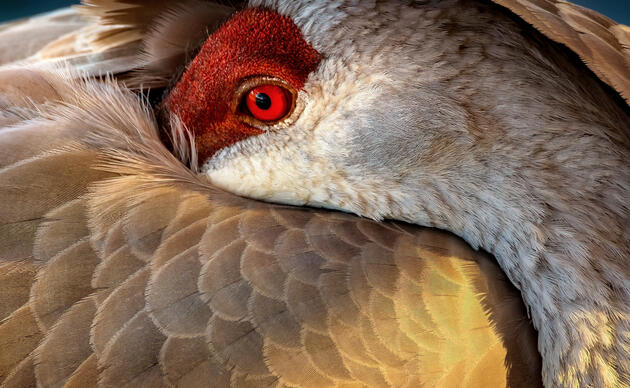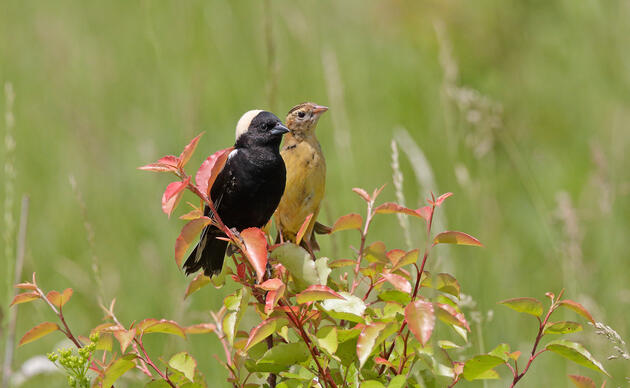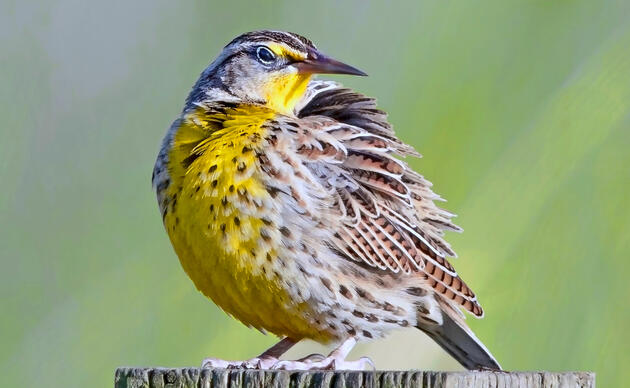Research on migratory birds is a critical and exciting new frontier in bird conservation. As birds travel across the continent and sometimes across the hemisphere, understanding where and how these amazing animals navigate these journeys can help inform more complete annual-cycle conservation strategies that incorporate all stages of a bird’s life cycle.
While the Great Plains has historically been dominated by prairies, there are small, isolated pockets of deciduous and coniferous woodlands along the major river valleys that host a small number of breeding migratory wood warblers. These particular woodlands are also a historical feature on the Nebraska landscape, albeit in very small and isolated quantities. Typically, most migratory warblers in North America are found in the vast eastern deciduous and boreal forests of North America. But at the extreme periphery of these natural distributions lies a peculiar and amazing population of warblers that can help us rethink what is happening for birds on the outskirts of their continental distributions.
Research began in 2023 to track the unknown migrations and determine the wintering grounds for Ovenbirds breeding at range periphery in Nebraska. After three consecutive breeding seasons and four migrations, much of the data from the tracking of these birds is coming into focus. Ovenbirds breeding in northwest Nebraska continue to winter in northwest Mexico and migrate through Baja California, parts of the Southwestern US, and through the southern Great Plains. This is in stark contrast to the core-range populations of the same species that breed from central Canada to New England, who will typically migrate east of the Missouri River crossing large bodies of ocean to reach either the Yucatan Peninsula or the islands of the Caribbean to spend the winter. But the amazing migrations of these animals is just part of the story.
The tracking devices that were used to collect information on Ovenbird migration in Nebraska are too small to transmit data, so in order to access the animal’s annual movements, an individual bird needs to be recaptured at its breeding site a full year after it was initially marked. While the migration data alone is quite exciting, another piece of very simple but very important data also comes back with that bird: the bird itself! Knowing not only that the bird has survived a full year (no easy feat for any small warbler that travels thousands of kilometers a year), but also that it returned specifically to its capture site to breed again provides a wealth of information.
Adult birds are more likely to return to a breeding location if they experienced breeding success at that location in a prior year. Thus, through breeding season observations and subsequent returns the following year, we not only understand where these birds migrate, but we can also know how well they are doing on the breeding grounds in Nebraska. Better still, we can draw connections from the migration data directly to the nesting success and apparently high survival we documented at our study sites. Over three summers, Nebraska Ovenbirds returned at rates that that were on par or above the rates of Ovenbirds that breed in the highest quality sites studied in their core range. This came as quite the surprise, particular given the somewhat atypical breeding habitat Ovenbirds occupy in northern Nebraska: small tracts of isolated forest dominated by Ponderosa Pine, grassy understory, and a handful of deciduous shrubs and small trees.
So what makes these small, far-flung pockets of unusual woodland work so well for this quirky population of Ovenbirds? It is likely a combination of factors, but perhaps the isolation of these sites adds additional incentive to return, reduces competition or increases breeding success. Perhaps their migrations mostly over land are safer than the over water routes undertaken by their eastern counterparts. Nebraska Ovenbird migration is certainly shorter, which reduces the number of risks and days expending massive amounts of energy while on the move. We hope that continued research and monitoring not only of Ovenbirds but on other migratory warblers breeding at range edge in Nebraska will continue to enrich our understanding and appreciation of these amazing birds.




